By Pamela Burke
TWITTER: @ThomsonBrent
It’s a cool, overcast morning in the Marin Headlands when runner Brent Thomson sets off for her 6AM jaunt. But hers is no ordinary undertaking. She’s sprinting 20 miles over hills and tough terrain to prepare for the highest and hardest run of her life–the 26.2 mile Everest Marathon on December 2.
“When you put yourself in extreme situations and you come through them, it makes you so much stronger.” Brent Thomson
The race starts on Mt. Everest in Nepal at 17,200 feet and ends 6,000 feet below. It’s a helicopter ride in and a 30 mile trek to the starting point. Brent’s approaching her sixtieth birthday but doesn’t give much thought to the age factor. For this Senior V. P. at Pacific Union International, a real estate firm in the San Francisco Bay Area, the morning run is a piece of cake.
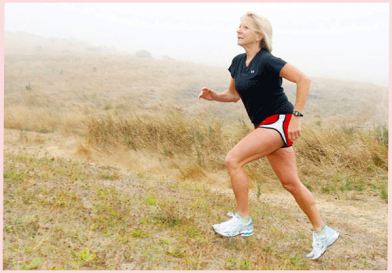
It may be cake to her but the rigorous exercise program would give a lot of athletes severe heart palpitations. She runs 18-26 miles every Saturday and 6-10 miles two days a week. Then there are two days of rigorous CrossFit training with just one day of rest. So how and why does she do it? We set out to find an explanation for Brent’s latest ultramarathon goal…
EYE: The marathon you are running down Mt. Everest in Nepal sounds incredibly challenging! It’s perhaps the toughest mountain marathon in the world.

BRENT: Most people have never heard of it, or they’re flabbergasted that anyone would be able to do it much less want to do it. There are 75 entrants, including 15 women. We meet in Kathmandu and head off together.
EYE: You’re approaching sixty. Why are you attempting this arduous race?
 BRENT: The training and the preparation are so good for me. I love it. I enter a lot of races throughout the year because I like to have a goal to work towards. It propels me forward.
BRENT: The training and the preparation are so good for me. I love it. I enter a lot of races throughout the year because I like to have a goal to work towards. It propels me forward.
It encompasses three things that I love: Nepal, running, and the Himalayas. I’ve never climbed to the top of Mt. Everest.
EYE: This is beyond a goal. Can there be a more difficult run for a marathoner?
BRENT: Not really, but anything you can think to do, somebody’s going to do it. The first time I went to Nepal was such a life changing experience for me. I’d never been anywhere like that in my life.
I was a debutante! I went to private girls’ schools my whole life. I traveled but never anywhere like Nepal. When I got over there with my son for the first time, it was just the most spiritual, healing place. I got completely out of myself.
I learned that I could stand intense physical discomfort and actually enjoy it. I found a part of myself that has served me well ever since. I’m really happy to know that I have the propensity to be in tough situations physically, mentally, emotionally, and not let it wear down my spirit.
“I have faith in myself that I am very capable; I don’t always have to know what’s going to happen next.”
EYE: How did that trip change you personally?
BRENT: I’m more open as a person. I’m much freer and not as in as much fear of the unknown. When you put yourself in extreme situations and you come through them, it makes you so much stronger.
I’m not going to worry about every little thing anymore. That held me back for a lot of years. I have an appreciation of being in the present and being OK with not having it all figured out.
EYE: Did you turn to any religion, to mindfulness or Buddhism by chance?
BRENT: I didn’t turn to any specific religion, and I don’t practice any. What I practice is a level of consciousness on how I live my life and being aware every day about what I’m doing, how I’m projecting myself and how I interact with other people.
I try to not react but step back and ask myself why I am feeling this way. Am I feeling attacked or vulnerable? Stuff comes at me all day long. Before I could not handle it as well as I do now.
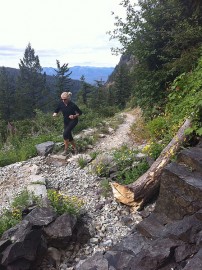
EYE: How did this all start?
BRENT: It was the mid 80’s. But I began pushing myself to extreme limits in Nepal in the 90’s and came back and got into ultra-marathon and trail running in a big way.
I was putting myself in circumstances where I had to pay attention about how I lived my life to enable me to compete and enjoy all the kinds of sports that I wanted to do.
EYE: Are you surprised that as sixty approaches, you can do what you’re doing?
BRENT: I don’t dwell on my age that much. It’s not my favorite thing to say that I’m going to be sixty because of my association with that. I say, well, I look OK. I’m very strong. I can run 20 miles in the Marin Headlands with no problem. I’m proud of that.
I go up and down outdoor staircases close to home. If I go 10 times up, it’s the same as climbing the stairs of the Empire State Building. I do these calculations to make things more fun for myself. If I can say to myself that I just ran up the Empire State Building with 12 pound weights in each hand, that’s pretty cool. When I’m with my trainer, it’s 20 pounds.
“It can be intensely cold; there could be a blizzard. It’s going to be a very difficult environment.”
EYE: Do you feel like you’re ready for the marathon or do you have more to do before you leave Nov. 14?
BRENT: I’m working on strengthening and overall conditioning with CrossFit training right now. I’m all set as far as running because I’ve run so much. The terrain and altitude are challenging there. There is no way to replicate that here in the West even if you go up in the Rockies.
It’s all glacial terrain for the first several hours. It’s rock and scree which are very inhospitable. There isn’t a marked trail. That’s part of the joke.

EYE: Are you going to be there early enough to get used to the climate?
BRENT: I think so. It takes 15 days to get to starting line. We’ll be up at Gorak Shep for several days before it begins.
The last time when we got to base camp we were so exhausted, tired, cold and suffering some effects of altitude, that it will be interesting to see how a couple of extra days this time will affect my overall well-being.
EYE: How do you find your way down?
BRENT: On the waiver you have to say that you memorized the trail on the way up. As you head down towards Namche Bazaar at the finish, there is more of a trekking trail, but right out of Gorak Shep for many miles, it’s just rubble, rock and ice. You’ll see the conditions in the video of this year’s race in May.
EYE: How do you prepare for these tough conditions?
BRENT: I’ve been doing a lot of balance work for running on rough terrain. You’ve just got to pay attention. You watch where you put every foot. You have to be able to recover if you lose your balance and slip off a rock.
Running downhill on rock is not my favorite thing. I’m a lot better at it now. I’m forcing myself to go a lot faster, taking steeper sections more quickly. I’m getting rid of the fear.
“I’ve never been last in anything. I don’t want to be last in this.”
EYE: What’s the toughest thing to overcome?
BRENT: Not to get caught up in the anxiety over the fact that I’m not going to know anybody or if I’m going to be the oldest person, etc. I’ve never been last in anything. I don’t want to be last in this.
As long as I finish healthy, have fun and meet my fundraising goals, that’s really what it’s all about. My fundraising goal is 20,000 pounds ($31,000).
I have a new website BrentRunsEverest.com. You click on the donation button and go to the giving site to give money. The whole race is run through Bufo Ventures, a nonprofit British company.
 EYE: Is this the most courageous thing you’ve ever tried?
EYE: Is this the most courageous thing you’ve ever tried?
BRENT: It’s probably the most physically and emotionally challenging thing I’ve done. I’ve signed up for some crazy stuff and gone by myself before. I went on a rugged 10-day backpacking trip to the high camps in Yosemite eight years ago.
You meet great people when you put yourself out there. On a trip like this you don’t need anyone who is afraid. I’m not carrying oxygen up to that level. I have never used it, and I’ve been up to 26,000 feet. To me, it would be an unfair advantage.
“We’ll be sleeping in tents the whole time. There are no lodges and tea houses.”
EYE: Is it all about being able to withstand the elements?
BRENT: It’s about the conditioning. That’s what makes this such a fiercely competitive endeavor. The base camp is rock, and it’s very uncomfortable. At over 15,000 feet you start to lose your appetite. You get raging headaches, and it’s very dehydrating.

EYE: What does it do to your body?
BRENT: I used to laugh. I would lay in my tent and look at myself. My face looked like a little shrunken apple doll, so I’m not looking forward to that. I remember getting off the plane when I was back at sea level and going to the hotel, taking a shower and putting on make-up, and I looked fine again.
The lack of oxygen and the thin air sucks the moisture out of your skin. For most people it’s a hardship not bathing or sleeping in a comfortable bed or any bed. Those things tax you before you even start a race.
“If you get into trouble, there are a lot of ways you could die.”
EYE: You’ve said that death is your constant companion on a trip like this. Is that really true?
BRENT: Yes, when you’re up in that kind of isolation, there is nothing around you for days. There’s the chance of falling, avalanches, weather, any number of things including pulmonary and cerebral edema. If you get into trouble, there are a lot of ways you could die.
You literally sign your life away to go on this trip. I had to agree to a liability waiver and buy insurance to repatriate my remains. That means if anything happens, the company involved is assured then that your travel insurance will pay to return your body to your home country.
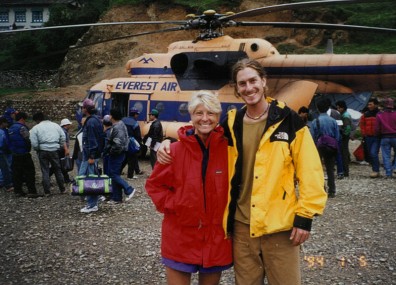
EYE: You have one son. What does he think of that?
BRENT: He loves me. He’s a smoke jumper with the U. S. Forest Service in Montana. He parachutes into forest fires, so he has the same wild gene and loves the outdoors.
He’s very proud of me. If he and his wife weren’t expecting their second baby right around the time I’m leaving, he’d be coming with me and that would be wonderful.
 EYE: Have you ever run eight hours straight?
EYE: Have you ever run eight hours straight?
BRENT: Yes, I’ve done a lot of 30 and 50 mile races. On this one I’ll be going a whole lot slower than I normally do. An average trail marathon would normally take me four and a half hours; they say plan on doubling it.
You can stop at the aid stations and whenever you feel like it, walk. It starts at 7AM and ends at 6PM. We’ll be descending within two hours and feeling better. By the end of the day we’ll be down to 11,000 feet. That’s what I’m hoping.
EYE: When you’re running that hard and that long, does it get you into a spiritual zone? Do all kinds of things run through your head?
BRENT: Boredom is the hardest thing to combat in long distance running. I think about everything. I go through highs and lows. There will be long periods where I’m really in tune with nature.
That’s why I like to run on trails. I hate running in cities now. It’s amazing what you see. I was running the other morning and saw this beautiful buck with these antlers silhouetted against the sky; it was breathtaking. There’s my gift for the day! No matter what else happens to me, I’ve got that.
EYE: What about the loneliness?
BRENT: The loneliness is a different kind of spirituality. Being in an environment like the Himalayas, you realize your huge insignificance. POOF, you could be gone, and it would not be a world event.
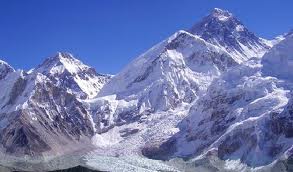
There is nothing but white peaks everywhere you look, as far as you can see, and the spectacular sky.
EYE: How do you meld your two worlds of running and a high-pressured job in real estate? Does your exercise program make your job easier?
BRENT: I’m a complete morning person. I’m energized then; I’m innovative. I think great thoughts. I run early or do an overall strengthening and conditioning workout consisting of eight different exercises. Those include 100 push-ups, 100 squats, lunges with weights, and jumps all with a trainer.
EYE: It sounds like you must be very disciplined.
BRENT: I am. If I slack off and something comes up, it’s really hard for me the rest of the day. I get up at 4:30 every morning during the week. That time between 4:30 and 9:30 is all I have for me. I do email, and I work part of it, but mostly that’s my time to run and formulate my thoughts.
It’s all about creating balance and not tipping too far one way or the other. I try to enjoy letting it be. I’m a pretty Type A personality so running is really good for me.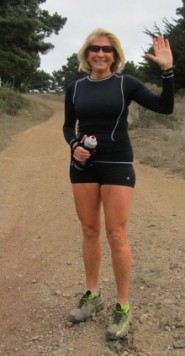
EYE: So what’s your secret to getting through this high altitude ultra-marathon?
BRENT: Here’s how I look at it. I just have to tough it out and get through the day. That’s how you approach any big event in your life; you cut it into pieces.
I’ll get the first two miles, then the next five. Overall, it’s only 26 miles, and I just have to get through it. I’ve done nothing close to this, nowhere near like this, but I’ll be fine!
EYE: We wish you the best of luck, Brent. Can’t wait to hear about all your experiences on the mountain. It sounds breathtakingly exciting!
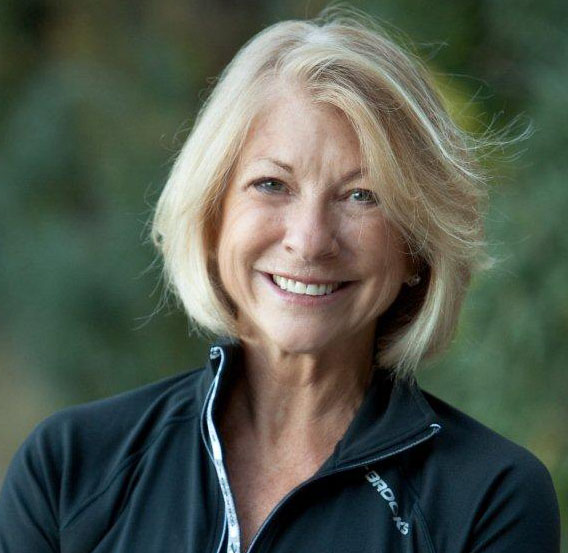

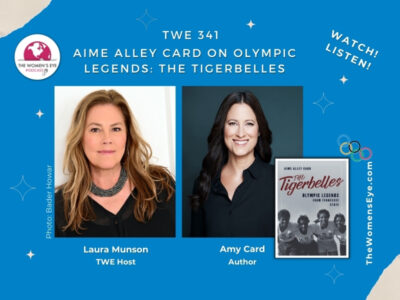

Leave a Reply